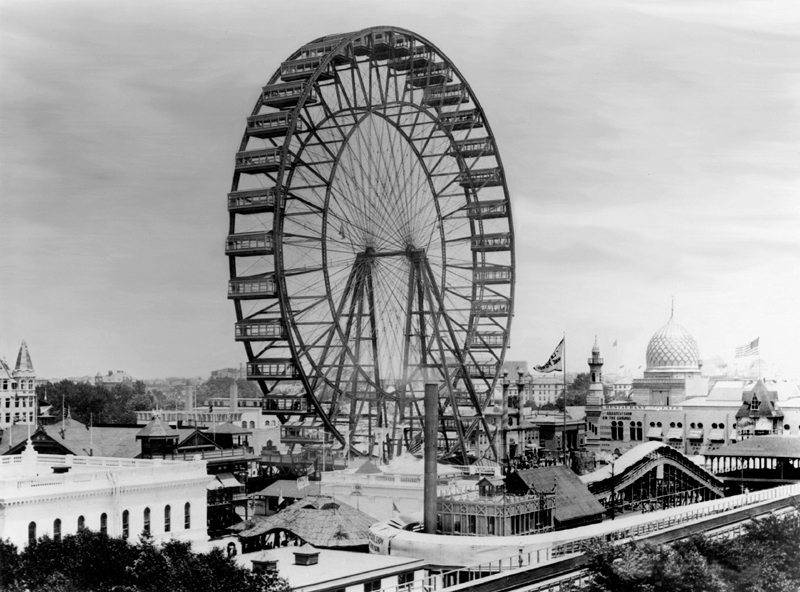In 1890, as plans for the World’s Columbian Exposition in Chicago were taking shape, organisers put a call out to engineers to design a superstructure. George Ferris had just the thing.
Director of Works for the Chicago exposition, Daniel H. Burnham wanted something that rivalled Paris’ Eiffel Tower, which had been erected in 1889 for the Exposition Universelle. Burnham challenged designers to come up with “something novel, original, daring and unique”.
From a proposal for a tower that enabled visitors to toboggan home, to a structure where guests would be pushed off in cars attached to thick rubber bands, there was no shortage of novel ideas.
There was even a suggestion for a taller version of Paris’ Eiffel tower, suggested by Gustave Eiffel himself.
But it was a 33-year-old civil engineer from Pittsburgh, George Washington Gale Ferris Jr, who came up with the solution the organisers were looking for.

After attending a banquet in Chicago where Burnham issued the challenge, Ferris sketched an idea for a huge revolving steel wheel. Initially rejected as “too fragile” by Burnham, Ferris went on to spend $25,000 of his own funds on safety studies, to prove his concept.
In December 1892, Ferris’ design was selected as the American answer to the Eiffel Tower, under the stipulation that he financed construction himself. Undeterred, Ferris formed a joint stock company, attracted wealthy investors, and commenced work.
More than 100,000 parts went into the wheel, including an 89,320 pound (40.5 tonne) axle.
A power plant was built to turn the giant wheel, with two 1,000-horsepower reversible engines connected to a 20,000 pound sprocket chain.
Thirty-six glass and steel passenger compartments were mounted onto the wheel, each carrying 40 swivel chairs to seat passengers.
Standing 80.4 metres tall and with a capacity of more than 2,000 passengers, Ferris’ wheel was launched at the Exposition on 21 June, 1893.
It proved to be a huge success, attracting more than 1.4 million people to take the ride over the following 19 weeks.
“It is an indescribable sensation,” wrote reporter Robert Graves, “that of revolving through such a vast orbit in a bird cage.”
But the superstructure wasn’t without its critics.
“It lacks, to our way of thinking, character and dignity of purpose, and must awaken in the mind of the serious and thoughtful the disappointing reflection that a vast amount of money has been expended upon the production of a giant toy,” complained a writer for The Manufacturer and the Builder.
Despite its (mostly) overwhelming success at the Exposition, ultimately the wheel didn’t bring much joy to Ferris.
In the years that followed, Ferris had to fight off a patent suit by William Somers, who, having created a 15-metre tall wooden wheel “roundabout” at amusement parks in New Jersey and New York, claimed to be the real inventor.
Ferris also became caught up in lawsuits about debts he owed to suppliers, and that the fair owed to him. He went on to declare bankruptcy, and in 1896, suffering from kidney failure and typhoid fever, 37-year-old Ferris passed away.
Dismantled prior to Ferris’ death, in 1904 the Wheel’s parts were reassembled for the Louisiana Purchase Exposition, where an additional three million people enjoyed the ride. But following the fair, residents complained it was an eyesore, and in 1906 it was dynamited into scrap.
Although he may not have lived to see the success of his invention, Ferris’ wheel is now a household name, appearing at local shows, amusement parks and carnivals, and with more complex designs including the London Eye and the Singapore Flyer now synonymous with these city’s skylines.
